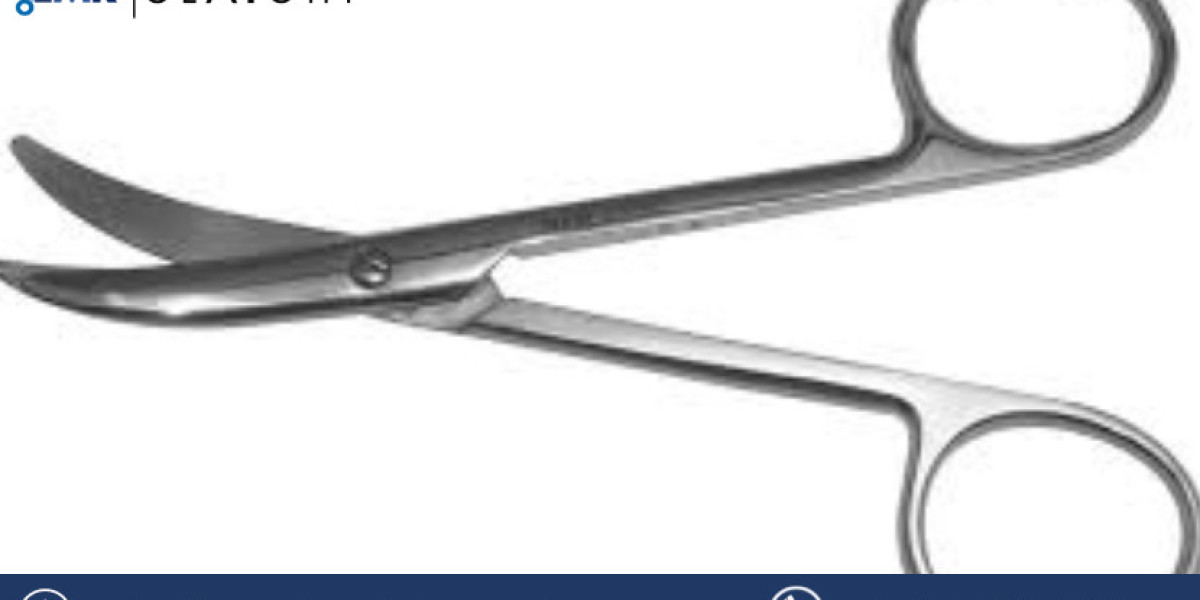The surgical scissors market is a niche but critical component of the broader medical instruments sector. This market can be segmented into various categories based on product type, application, and end-users. Each segment addresses specific operational needs within the healthcare industry, focusing on efficiency, precision, and patient outcomes. Here's a more detailed look at each of these segments:
Product Type
Surgical scissors are differentiated primarily by their disposability and material, which cater to different surgical environments and requirements:
Disposable Surgical Scissors: These are intended for single-use and are favored in settings that prioritize infection control and quick turnover times. They eliminate the need for sterilization and are increasingly popular in procedures with high risks of cross-contamination.
Reusable Surgical Scissors: Made from high-quality, durable materials like stainless steel or titanium, these scissors can be sterilized and used multiple times. Reusable scissors are cost-effective over time and are preferred in environments where surgical instruments are thoroughly managed to ensure longevity and maintain sterility.
Application
Surgical scissors are used in various medical fields, each requiring specific types of scissors based on the nature of the surgical procedures:
General Surgery: This includes a wide range of routine surgeries where standard surgical scissors are used for cutting tissues and sutures.
Gynecology: Specialized scissors like episiotomy scissors are used in obstetric and gynecologic surgeries to make precise cuts, minimizing tissue damage.
Dermatology: Scissors in dermatological applications are typically smaller and designed for fine, precise cuts, necessary for skin surgeries and cosmetic procedures.
Cardiology: In cardiac surgeries, surgeons need robust and highly precise scissors capable of cutting through tough tissues without causing damage to the delicate structures of the heart.
Orthopedics: Orthopedic scissors need to be sturdy enough to handle the cutting of denser tissues, such as muscles and tendons.
End-Users
Different healthcare facilities have varying needs based on the types of surgeries they most commonly perform:
Hospitals: The largest segment of end-users, hospitals require a wide variety of surgical scissors to accommodate a broad range of surgical specialties and procedures.
Specialty Clinics: These clinics often focus on a specific type of medicine, such as dermatology or orthopedics, and therefore require specialized surgical scissors tailored to their particular needs.
Ambulatory Surgical Centers: These centers are focused on same-day surgical care, including diagnostic and preventive procedures. They often favor disposable scissors due to their efficiency and lower risks of infection.
Geographical Regions
The demand and distribution of surgical scissors also vary by geographical region, influenced by local healthcare infrastructure, regulatory policies, and economic conditions:
North America: With a well-established healthcare system and high standards for patient care, this region demands high-quality, innovative surgical instruments.
Europe: Similar to North America, Europe has stringent regulations for medical devices and a high adoption rate of technologically advanced surgical tools.
Asia-Pacific: This is the fastest-growing region due to rising healthcare expenditure, increasing number of hospitals, and growing medical tourism.
Latin America and Middle East & Africa (MEA): These regions are experiencing gradual growth with improving healthcare infrastructure and increasing access to medical facilities.
Market Outlook
The future of the surgical scissors market looks promising with opportunities in various applications and regions. The continuous development in surgical practices and the shift towards minimally invasive surgeries are expected to drive market growth through 2032.
Key Players
Prominent players in the surgical scissors market include:
- Arthrex, Inc.
- B Braun Melsungen AG
- KLS Martin Group
- Integra LifeSciences
- Thermo Fisher Scientific
- World Precision Instruments
- Scanlan International
- Stryker
- Purple Surgical International
- Olympus Corporation
- Teleflex Incorporated
- Alcon Vision LLC
- Becton, Dickinson and Company
These companies are focusing on expanding their market presence through new product developments, mergers, and acquisitions.
FAQs
Q1. What drives the growth of the surgical scissors market?
- The growth is primarily driven by the increasing number of surgical procedures worldwide and technological advancements in medical surgeries.
Q2. Which region holds the largest market share?
- North America holds the largest share due to its advanced healthcare system and high volume of surgical procedures.
Q3. What are the challenges faced by the surgical scissors market?
- Challenges include stringent regulatory requirements, high competition, and the need for continuous product innovation.
Q4. How is the demand for disposable surgical scissors shaping up?
- The demand for disposable surgical scissors is growing as they offer sterility and safety, reducing the risk of cross-contamination.
Media Contact:
Company Name: Claight Corporation
Contact Person: Robin Johnson, Business Consultant
Email: [email protected]
Toll-Free Number: US +1-415-325-5166 | UK +44-702-402-5790
Address: 30 North Gould Street, Sheridan, WY 82801, USA
Website: www.expertmarketresearch.com







